Using Infrared Thermography to Solve Hidden Problems
Infrared (IR) thermography is a technology that provides important information relating to otherwise inaccessible areas within buildings. The technology depicts small temperature variations from room to room by identifying “cold” or “hot” spots, suggesting locations of potential problems that may not have been identified through traditional visual inspections. Some of the most common problems identified using IR thermography include:
- Hidden Moisture Intrusion
- Energy (Heat) Loss
- Electrical and Fire Hazards
- Insulation Deficiency
- Roof and Ceiling Leaks
The following are a few examples of how we have used IR thermography to help solve problems for our clients.
Hidden Moisture Intrusion
The images below show how thermal imaging helped our staff determine a hidden area of moisture intrusion in a client’s commercial office space. Using IR thermography, we pinpointed the location of moisture intrusion and further investigation revealed a hidden fungal amplification both inside the wall and under the carpeting. With the problem areas identified, we assisted our client in remediation of the affected areas.
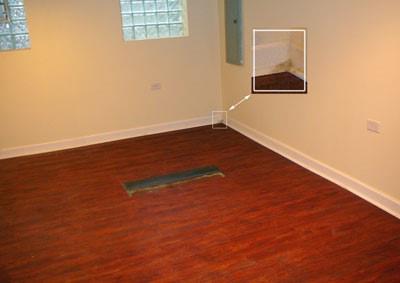
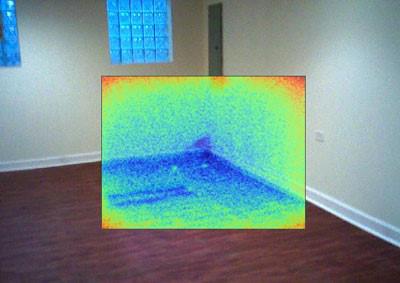
Moisture instruction can also rapidly reduce the insulating power of a wall or roof, causing year-round energy losses.
Energy (Heat) Loss
One of the first commercial uses for IR thermography was inspecting buildings for heat loss. IR thermography provides data that allows us to advise our clients on how to increase the efficiency of the building. In our experience, the most common problems are in the following three areas:
- Building Envelope Construction and Insulation
- HVAC System Supply or Return Leaks
- Infiltration Initiated by the HVAC System
Our building envelope inspections also verify the proper installation of insulating materials. IR analysis is the only proven, nondestructive method for troubleshooting building heat loss and moisture problems.
The photos below illustrate the sensitivity of the camera and show examples of heat loss.
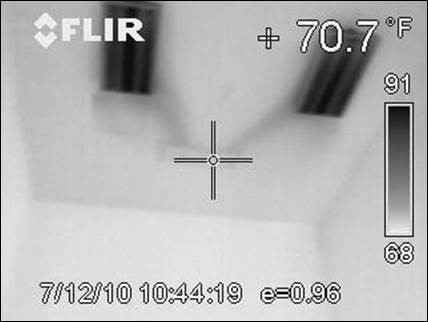
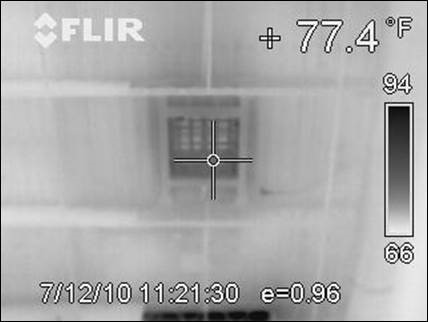
Electrical and Fire Hazards
Deficiencies within an electrical system can be readily identified using IR imaging. During a recent inspection of a commercial office space, we observed that some lights were flickering while others were not. During our inspection of the electrical distribution system, we used IR thermography to identify and diagnose the problem circuit. Our investigation revealed that the circuit breaker was undersized for the intended application, presenting a fire and shock hazard.
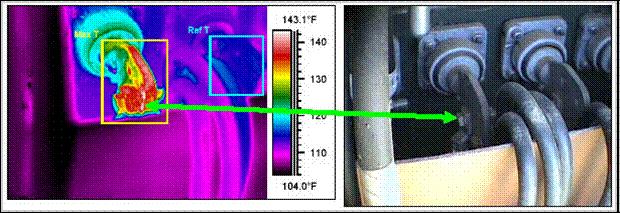
IR Thermography is the ideal application for investigation of areas or components that are otherwise inaccessible. With advancements in the IR technology, the precision, speed and convenience of inspections have become more efficient and less expensive compared to years past. Please contact us with any questions or future needs regarding this service.


I appreciate that you mentioned how infrared thermography can help with ensuring that a building is energy efficient and not losing too much heat. That must be a nice feature for determining if an HVAC system needs to be fixed or replaced. If I owned a building that required that kind of testing, I would want to make sure it had optimal energy efficiency.